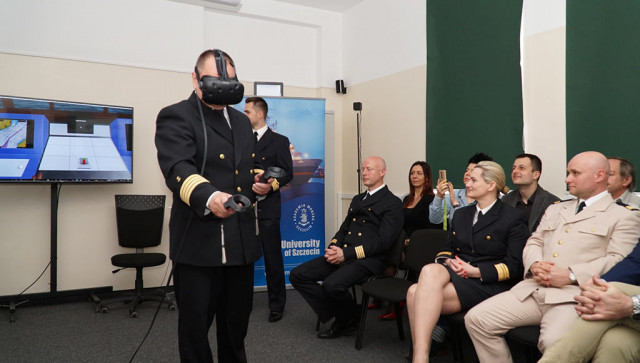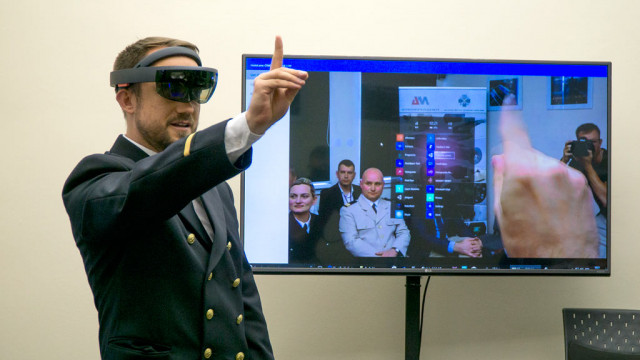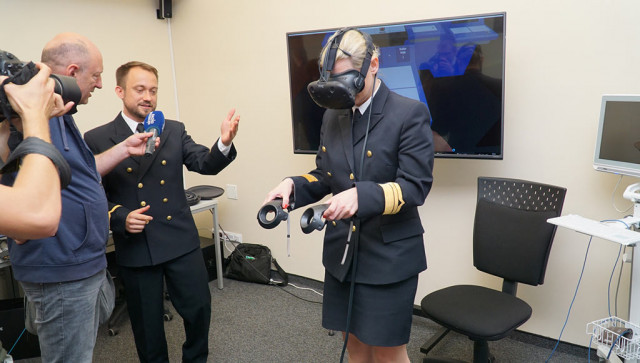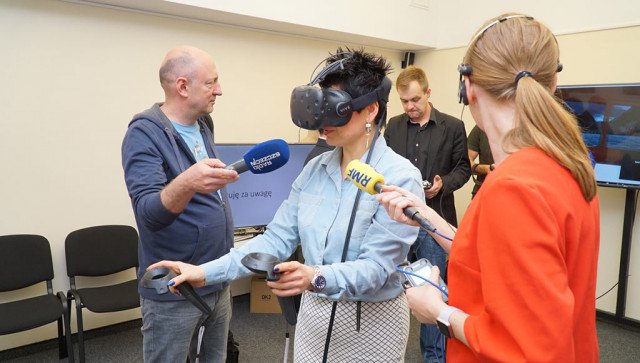An innovative laboratory of virtual and augmented reality systems has been established at the MUS Faculty of Navigation - it is one of the first units in the world using VR and AR possibilities for the needs of maritime industry.
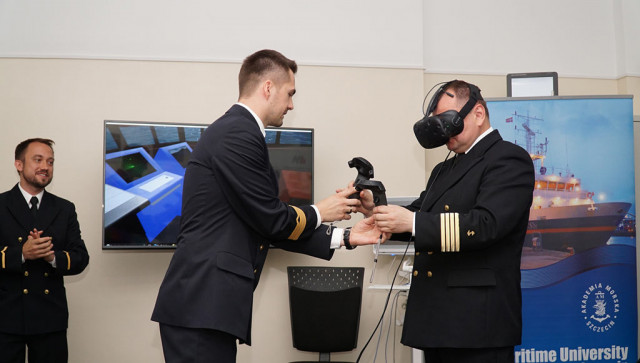
The opening ceremony of the laboratory was held on Wednesday, 7th June, in the Marine Traffic Engineering Centre, where it operates. The ceremony was attended by the authorities of MUS and the Faculty of Navigation as well as representatives of companies and institutions cooperating with the laboratory.
The laboratory is equipped in e.g. Oculus Rift DK2, HTC Vive (VR equipment available on the market for a year now), Microsoft HoloLens (augmented reality glasses, device in the developer version), Microsoft Kinect v2 and SMI Eye tracking glasses.
The work conducted in the new laboratory enables us to develop VR and AR applications for the needs of maritime industry. Among other things, educational applications will be created to enable better learning about the ship structure and specificity of all procedures related to its operation. Thanks to using the simplest virtual reality systems and cameras recording a 360-degree image, students, already in the first year, will be able to experience in 1:1 scale what the navigation bridge, ship engine room or double bottom and cargo tank construction look like.
Using the latest technologies, we can create virtual simulators which enable realistic reproduction of a bridge of any ship, including its specificity and size. – This is impossible on a single, classic navigation bridge simulator – says Bartosz Muczyński, MSc., the laboratory supervisor. Such simulations may be used while educating students or training marine staff. At the moment, we are using them for research and are still developing our own simulations, which will constitute the basis for education.
- We have already created the basis of the virtual ship simulator, which enables freedom of movement on the ship’s bridge and interaction with its elements. Its advantage over a classic simulator is the possibility of any modification in the image of the bridge and functioning of its elements as well as much better reproduction of the size and distance scale - adds Bartosz Muczyński. Additionally, using new graphic solutions and computers, we are able to create a very realistic and suggestive environment. - At first glance, it is a very modest laboratory: two screens, a computer, controllers and glasses. Impressive is the world where these devices take us and the possibilities which we are able to programme - said Rafał Gralak, PhD. Eng., Director of the Marine Traffic Engineering Centre.
We have also begun integration of navigation devices from a real ship simulator with Mictrosoft HoloLens in order to create a system which would provide a navigator with information depending on what would be within his view at a given moment. On further stages of the work, we are planning to test the equipment in real conditions on the vessel of the Maritime University of Szczecin - Nawigator XXI.
During the meeting, the guests had a chance to see with their own eyes what a simulation with the use of virtual reality is like. - Graphics is very realistic. You can even see how “billows” are created on wave crests - Elżbieta Wojniłko, Head of the MUS Department of Teaching and Certification, related her experience - The feelings are incredibly real and, during manoeuvres, you really feel dizzy - she added.

